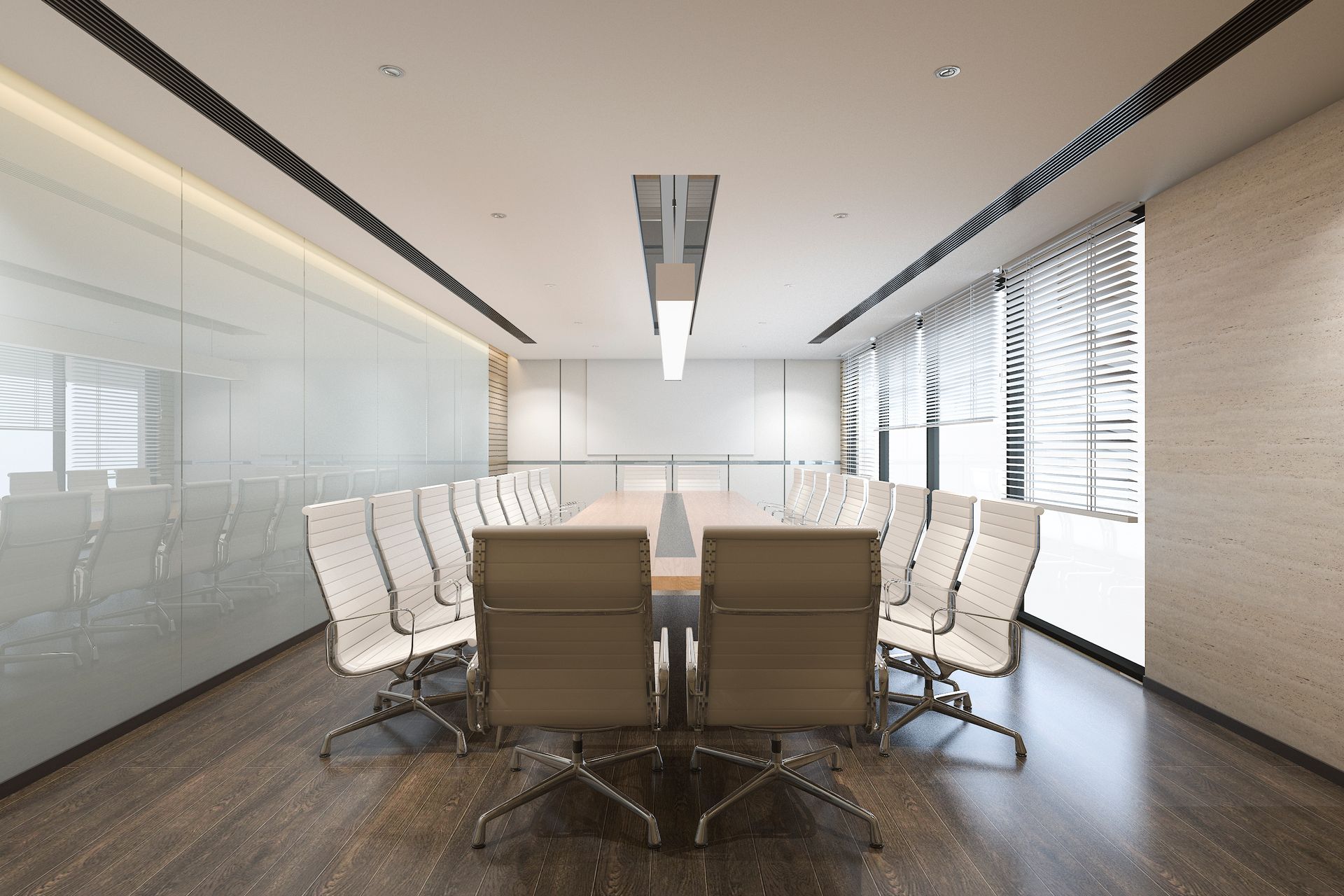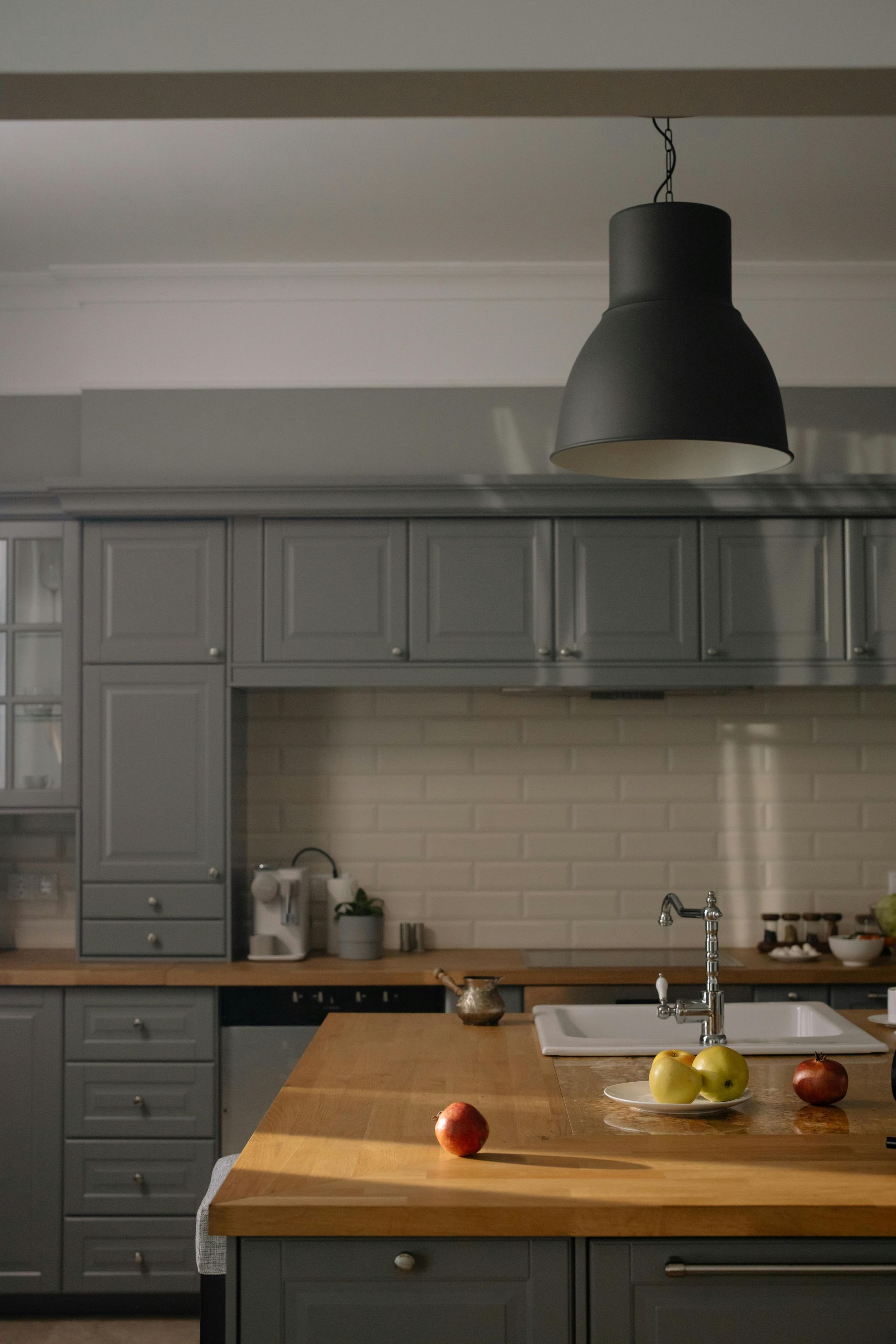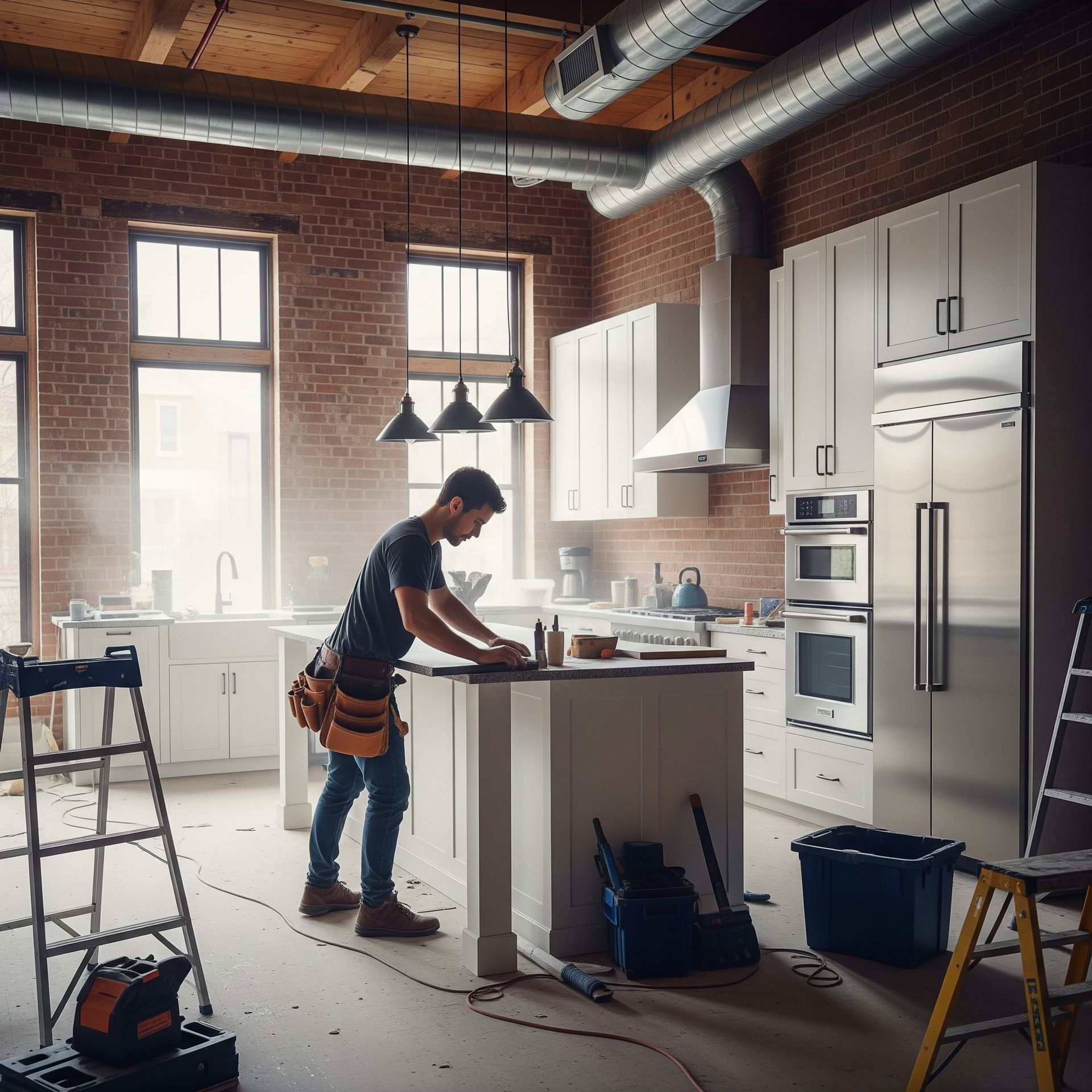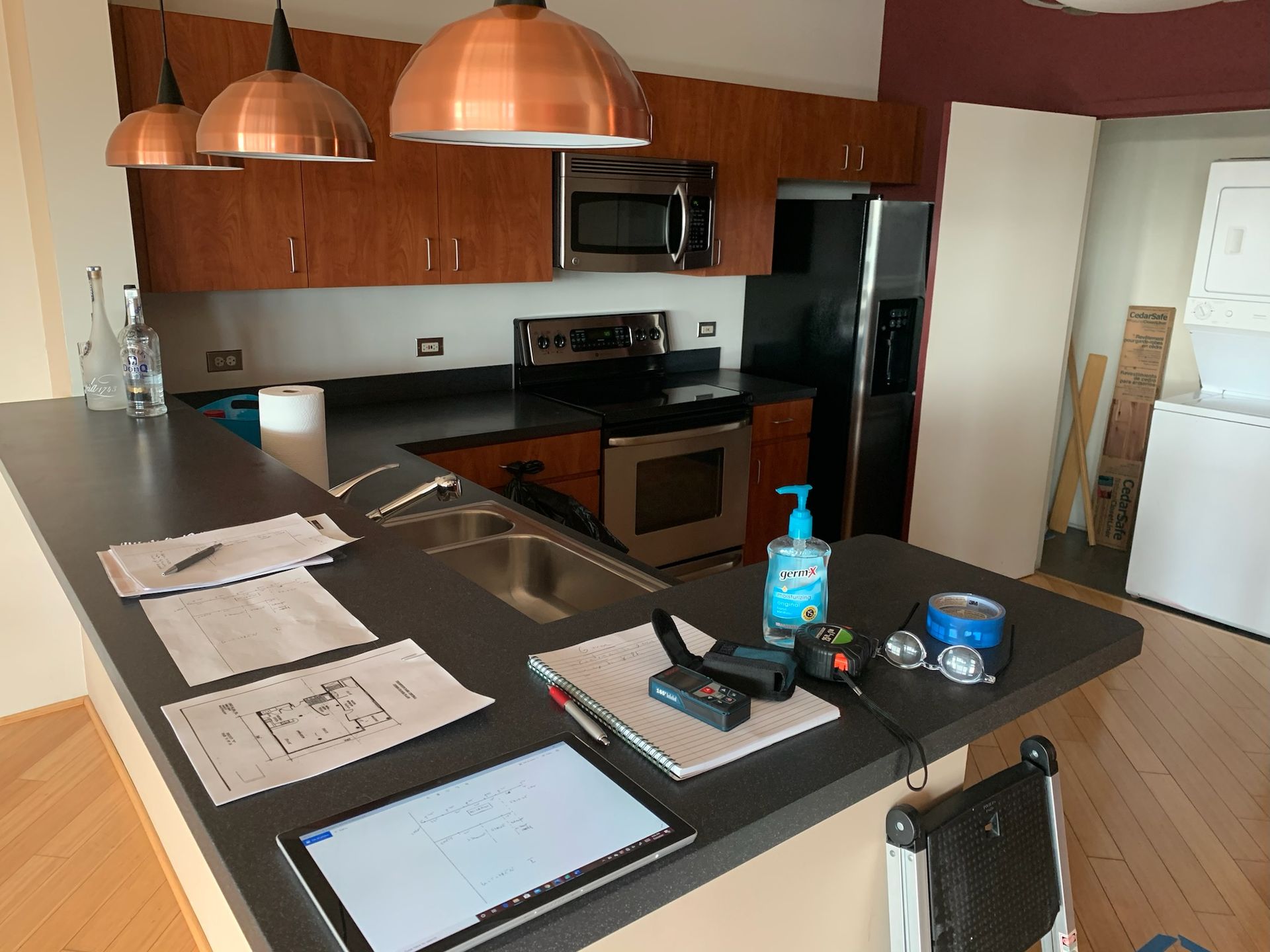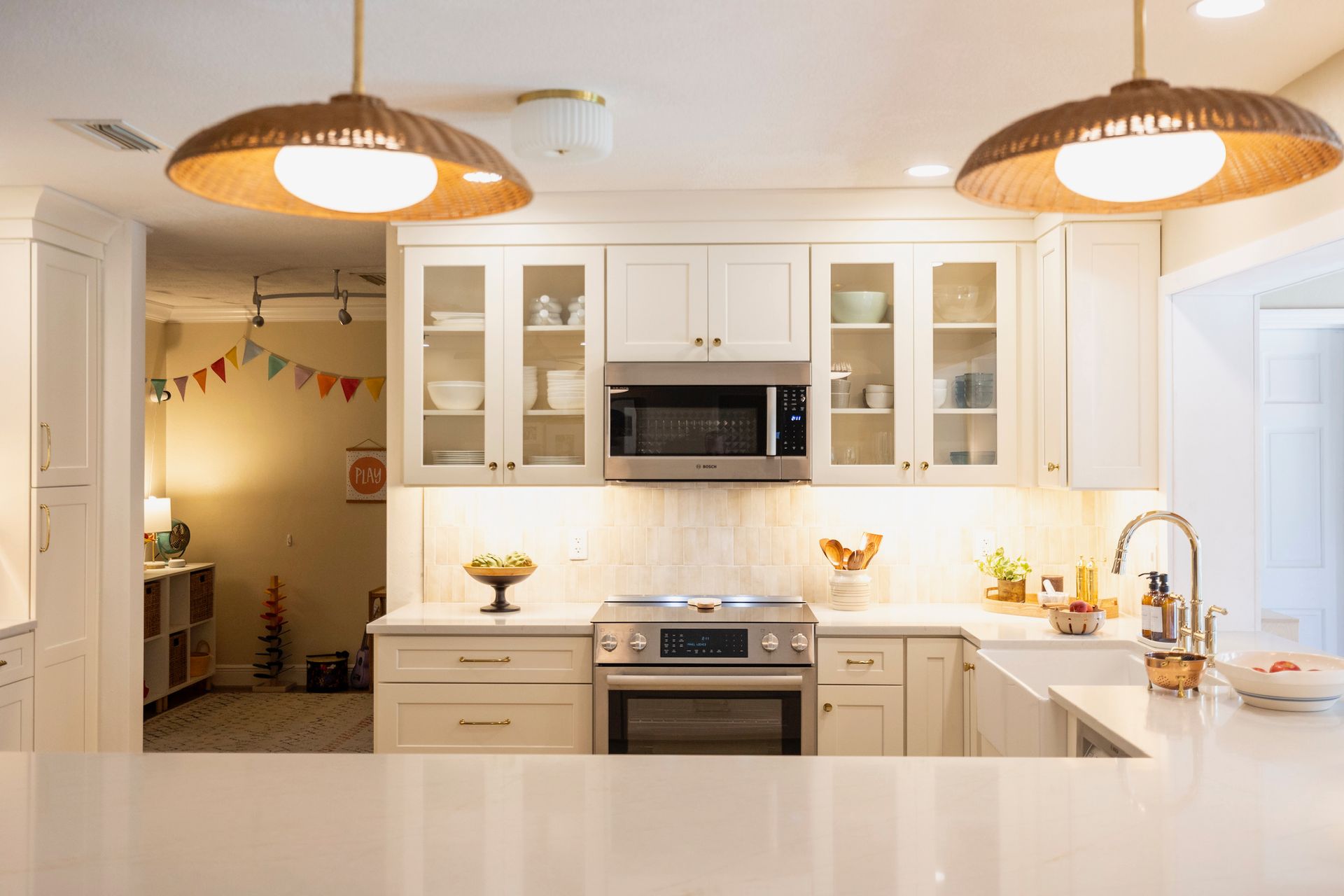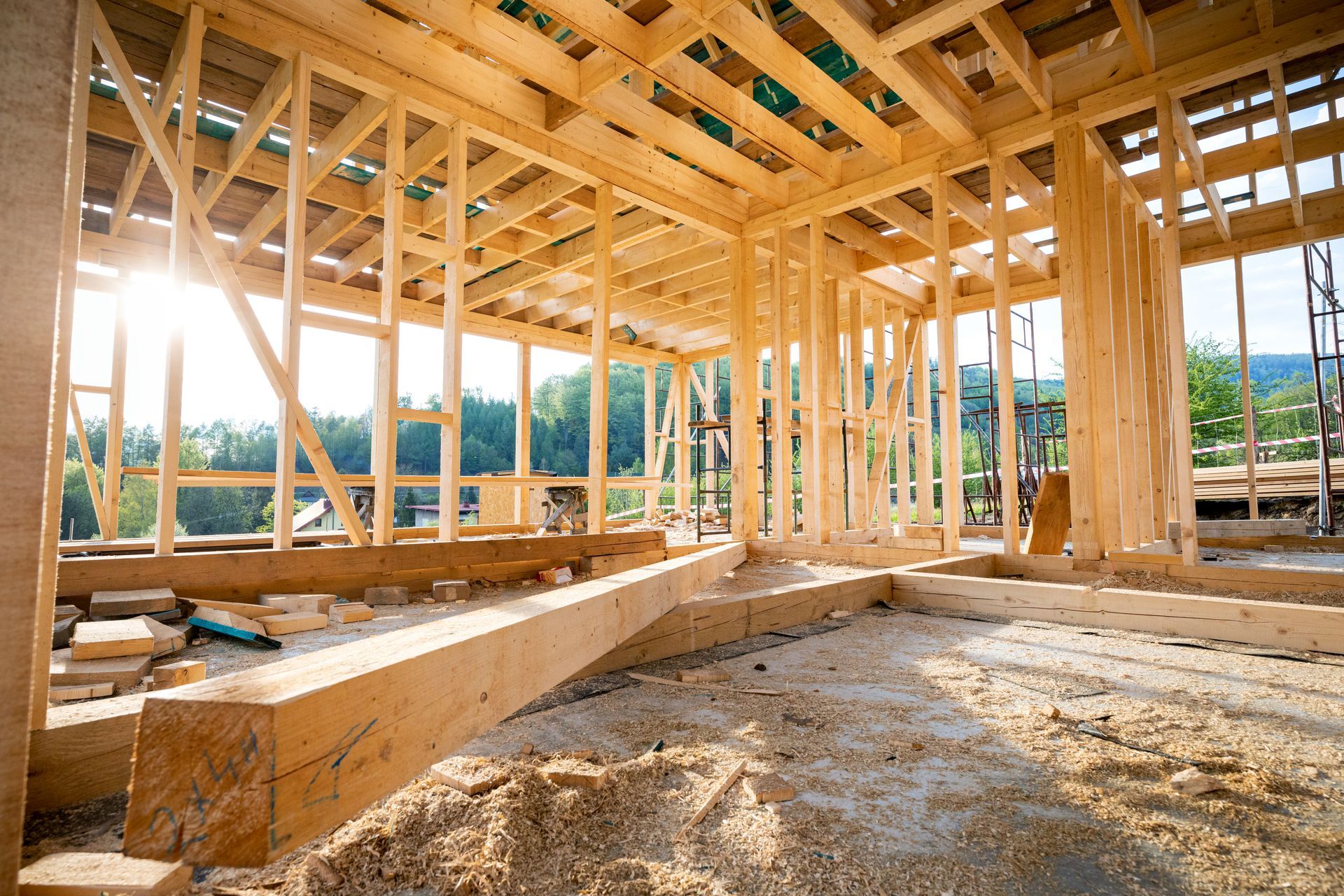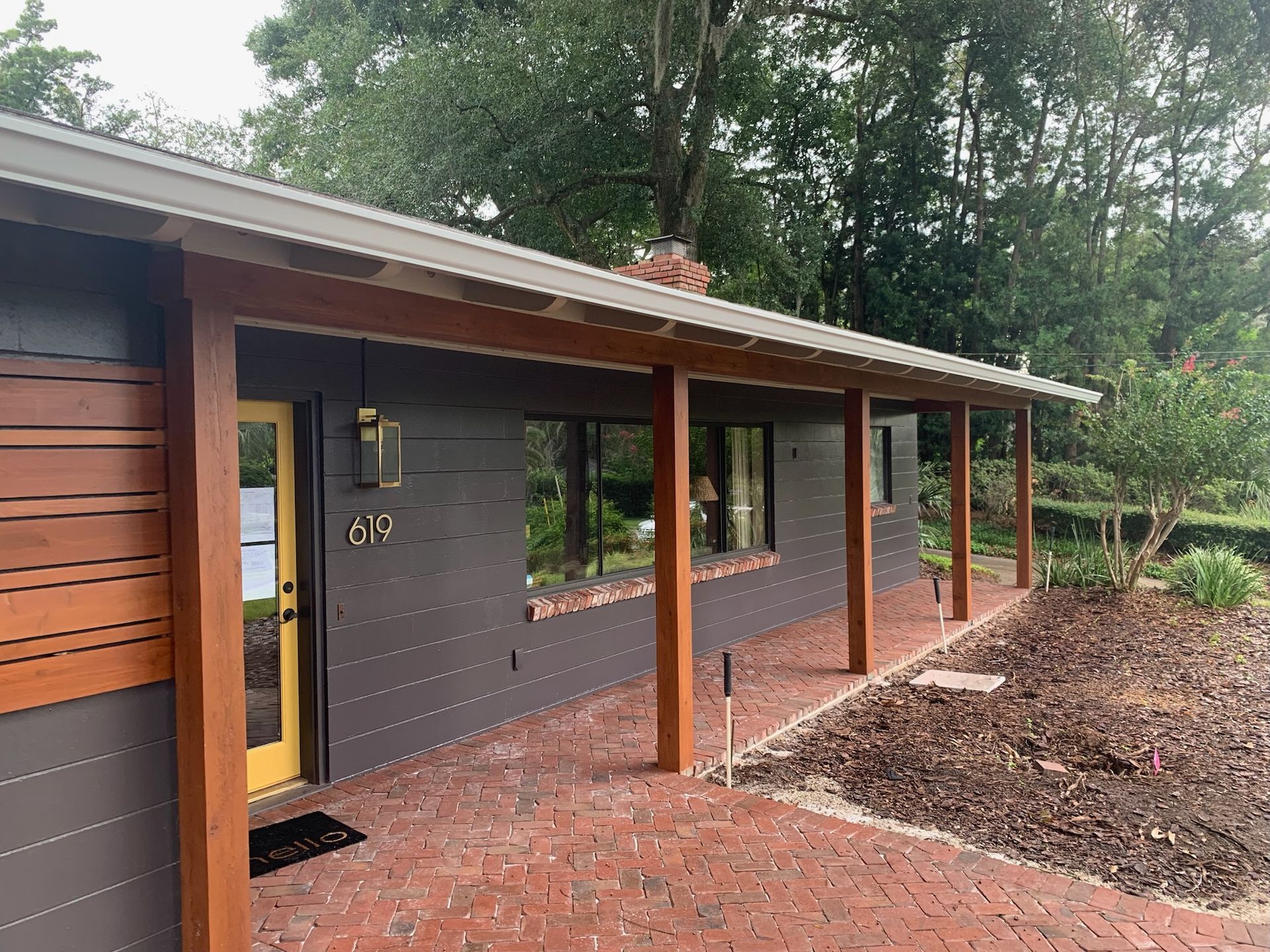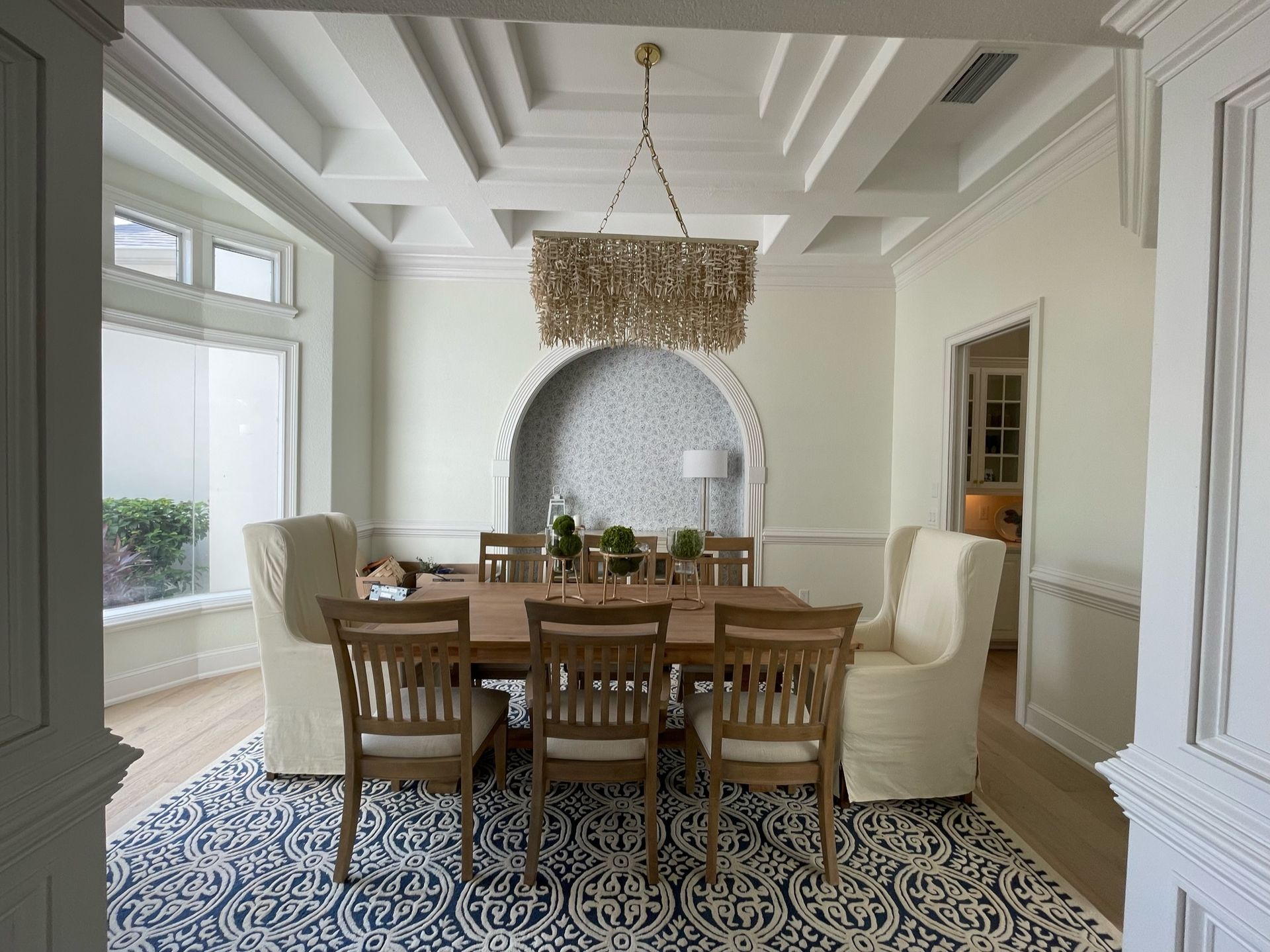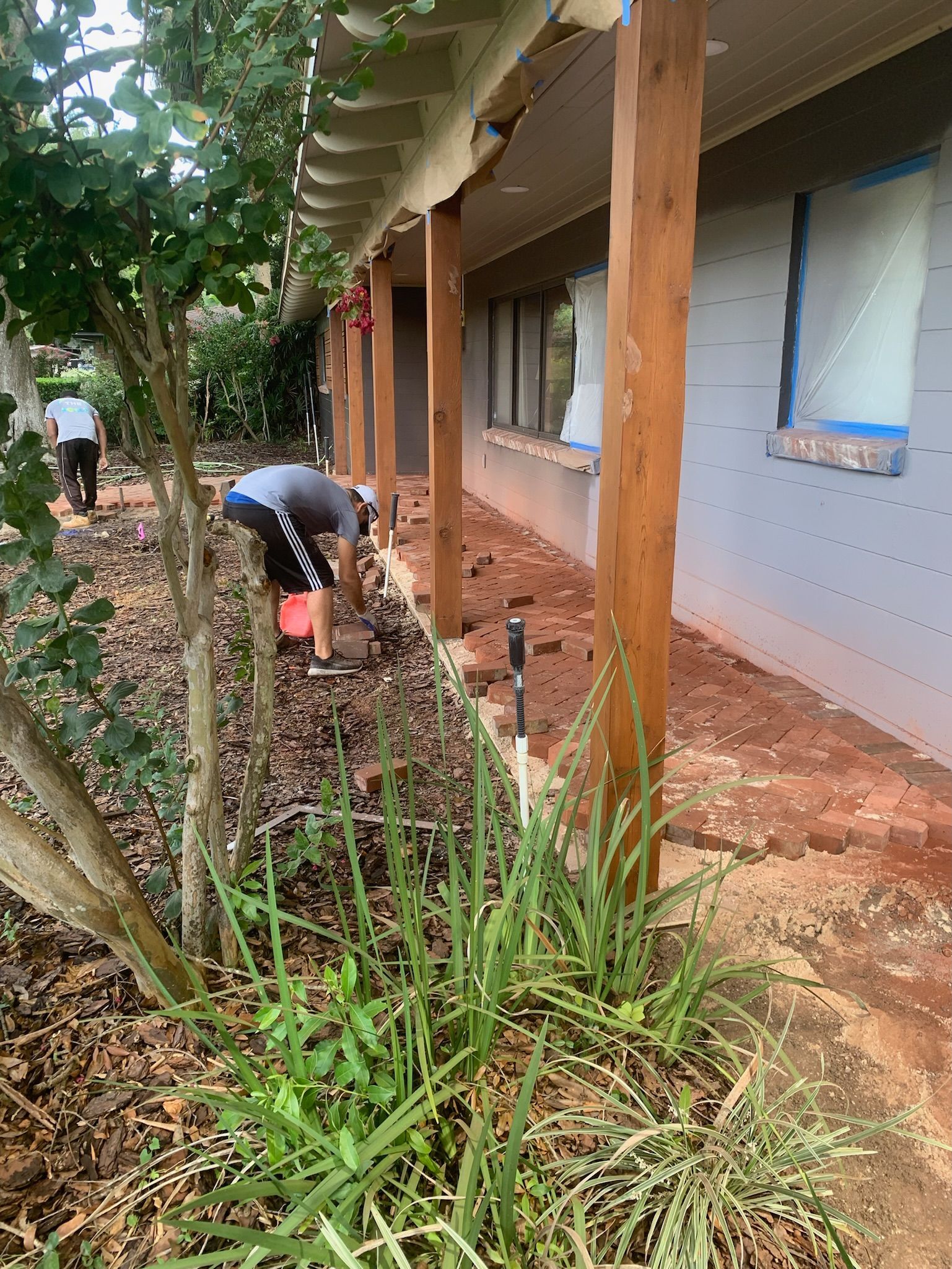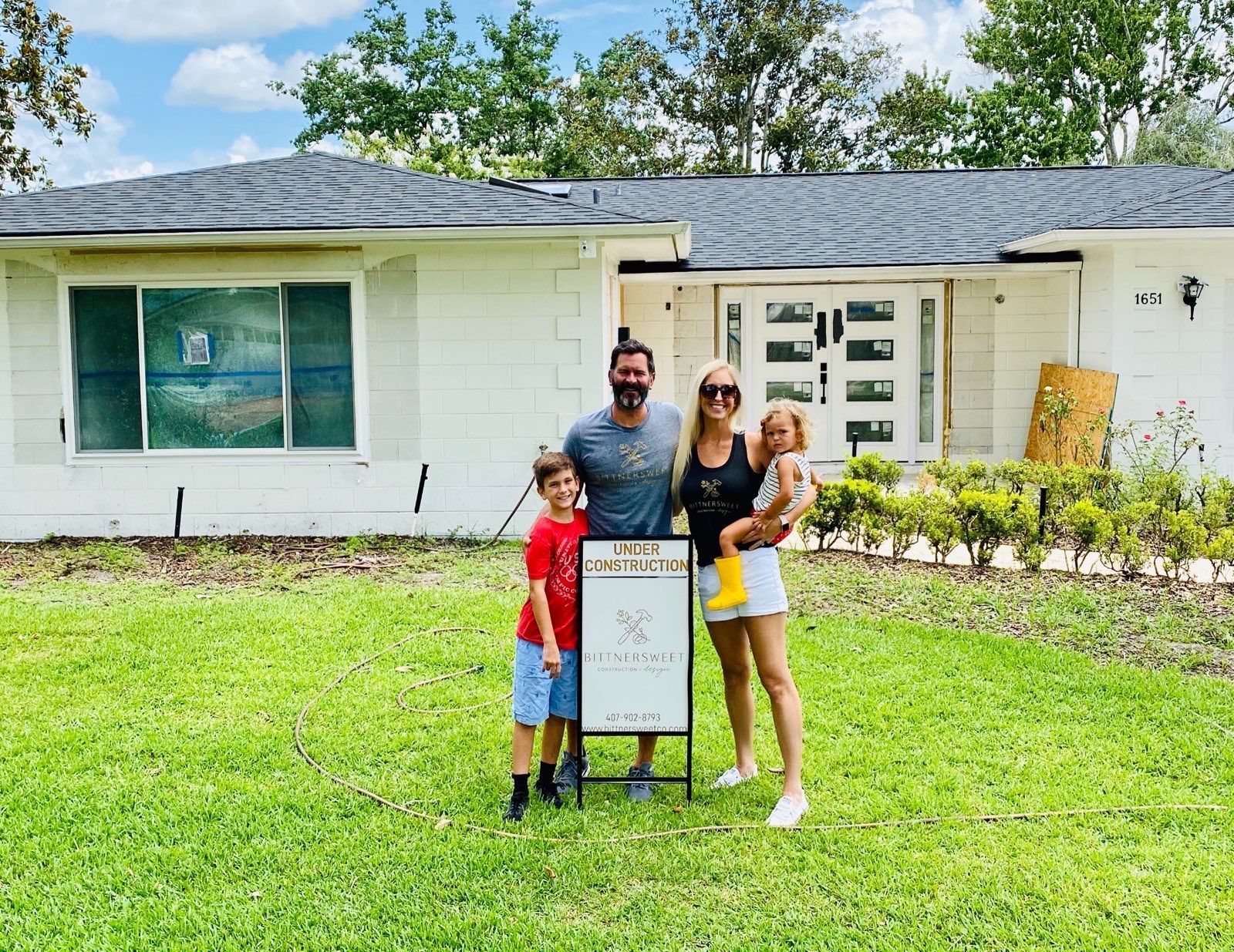Maitland Homeowners: Discover These 2025 Design Trends
Ready to refresh your home before 2025 ends? Consider incorporating bold earthy colors like deep terracotta and olive greens to create a cozy and inviting atmosphere. Natural wood and stone add warmth and grounding elements, while open layouts and abundant natural light enhance brightness and spaciousness. Smart devices provide convenient, streamlined control, and sustainable features like solar panels support eco-friendly living.
Explore the benefits of mixing art with multi-functional spaces in your home design for modern living.
Key Takeaways
- Embrace bold, earthy color palettes like terracotta and olive green for a warm, inviting home atmosphere.
- Integrate natural materials like wood, stone, and woven textures to add grounding and organic feel.
- Maximize natural light with open layouts, light window treatments, and mirrors for a bright, airy space.
- Seamlessly incorporate smart home technology for convenience, automation, and stylish control of daily routines.
- Prioritize sustainable features such as solar panels, native plants, and rainwater harvesting to boost eco-friendliness.
Embracing Bold and Earthy Color Palettes
2025 is an ideal time to introduce bold and earthy colors into your home design. Deep terracotta paired with rich olive greens creates an inviting aesthetic, while dark navy combined with soft, sandy tones offers sophisticated contrast that remains warm and welcoming.
These color choices establish a refined atmosphere that demonstrates thoughtful design choices. When incorporating these natural hues, you create an environment that feels grounded and intentional—a space where residents and guests appreciate quality design decisions. The psychological impact of earthy tones extends beyond aesthetics; these colors have been proven to reduce stress and create a sense of calm within living spaces.
Consider exploring bold color combinations that reflect your personal style. Your home will benefit from this modern approach to color selection. Many Maitland homeowners have found that introducing one or two accent walls in deep terracotta or olive green can dramatically transform an entire room without requiring a complete renovation. This approach allows you to test colors before committing to larger investments.
Pairing these bold colors with neutral backdrops ensures visual balance while allowing the earthy tones to become focal points. Neutral walls in cream, beige, or soft gray provide excellent canvases for earthy color accents to shine, creating sophisticated and timeless interiors that won't feel dated in future years.
Integrating Natural Materials and Textures
Pairing bold, earthy colors with natural materials and textures creates visual cohesion throughout your space. Natural stone and wood accents establish a grounded atmosphere while maintaining a connection to the outdoors. These elements require minimal intervention to generate a significant impact on your home's character and overall design aesthetic.
The integration of natural materials extends beyond visual appeal. Wood provides warmth and authenticity, while stone introduces durability and timeless elegance. Woven textures in baskets, rugs, and upholstery add layers of sophistication and tactile interest to your spaces. These materials work harmoniously together, creating environments that feel both contemporary and timeless.
Consider these approaches to incorporate natural materials:
- Add a natural stone backsplash in your kitchen for a rustic yet elegant look
- Incorporate wood accents like floating shelves or a reclaimed wood coffee table
- Use woven baskets or rugs made from natural fibers to add texture
- Choose furniture with visible grain or rough-hewn finishes
- Bring in plants to complement the natural materials and add life
The beauty of using natural materials lies in their versatility. They complement virtually any design style, from contemporary minimalist to traditional farmhouse aesthetics. Stone backsplashes in kitchens improve both functionality and visual interest, while reclaimed wood pieces add character and environmental consciousness to your home. These materials age gracefully, developing patina that enhances their appeal over time.
Maximizing Light and Creating Open, Adaptive Spaces
Natural light significantly improves the ambiance of any room. Designing your space to feel open and airy creates a welcoming environment that feels expansive rather than confined. This design principle has become increasingly important as homeowners recognize its impact on both mental well-being and property value.
Open layouts allow sunlight to permeate your home, brightening each area and making rooms feel larger than their actual dimensions. Consider removing heavy furniture or substantial window coverings that obstruct light. Instead, opt for lighter window treatments or minimal coverings when privacy allows. Sheer curtains, roller shades, and minimalist hardware solutions maintain privacy without sacrificing the influx of natural illumination.
Mirrors serve as effective tools for distributing natural light throughout your space, effectively multiplying brightness without additional effort. Strategically placed mirrors reflect sunlight into darker corners, creating the illusion of additional windows and larger rooms. This technique proves particularly valuable in homes with limited window exposure or north-facing rooms that typically receive less direct sunlight.
While open floor plans create an environment that feels fresh and energetic, facilitating connection and interaction, they require strategic zoning to maintain functionality. Defining distinct areas within open spaces allows for designated zones for different activities—relaxation, work, and dining—while maintaining visual openness. Use rugs or furniture to define different zones, add half-walls or open shelving for subtle separation, pick lighting that suits each activity zone, incorporate plants or screens as natural dividers, and choose flexible furniture that adapts to your needs. These approaches create organized, welcoming environments suitable for various activities and social gatherings.
Creating Adaptable, Tech-Enhanced Living Spaces
Modern homes benefit from a flexible design that adapts to various activities and needs. Smart furniture solutions combined with thoughtful technology integration create spaces that transition seamlessly between different functions, supporting both work and leisure in a single environment.
Flexible furniture becomes essential when your space must accommodate multiple purposes. Modular seating adapts from lounge configuration to additional seating arrangements, while convertible tables transition from coffee surfaces to dining platforms without compromise. Nesting stools tuck away neatly, fold-out desks support work or hobbies, and storage ottomans hide clutter with style. These design choices maximize your available space while maintaining an open, welcoming atmosphere.
Smart home integration has become essential to modern living. Systems that control lighting, temperature, and security via simple commands or applications provide substantial convenience and functionality. Automated lighting adjusts illumination to suit different times of day and activities, all without manual intervention. Voice-activated controls and mobile applications put home management at your fingertips. Temperature control systems learn your preferences and adjust automatically, while smart lighting adapts to circadian rhythms, supporting natural sleep cycles.
Strategies for incorporating smart technology effectively include using voice commands to control lights, music, and temperature, setting lights to turn on when you enter a room and off when you leave, syncing your smart devices with your phone for easy access anywhere, and automating routines like morning coffee or evening shades. Choose devices that blend with your décor, so tech stays stylish. Sleek, discreetly positioned devices complement your décor rather than dominate your space, creating a polished, cohesive aesthetic.
Smart home technology functions best when it enhances rather than complicates daily routines. The goal is to simplify lifestyle management while maintaining aesthetic appeal. This thoughtful integration enables multi-functional spaces that adapt to your lifestyle, whether you are working, relaxing, or entertaining, creating an environment where you maintain control and connection.
Incorporating Sustainable and Eco-Friendly Features
Incorporating sustainable and eco-friendly features into your home design supports environmental responsibility while maintaining style and comfort. Renewable energy sources and green landscaping represent practical investments that benefit both your household and the broader community. These choices also enhance property value and aesthetic appeal while reducing long-term operating costs.
Homeowners implementing sustainable features report reduced energy bills, improved indoor air quality, and enhanced property resale value. Environmental consciousness increasingly influences purchasing decisions, making eco-friendly homes particularly attractive to modern buyers. Beyond financial benefits, sustainable living creates psychological satisfaction derived from positive environmental impact.
Common
eco-friendly options include:
| Feature | Benefit |
|---|---|
| Solar Panels | Lower energy bills |
| Rainwater Harvesting | Saves water, great for plants |
| Native Plants | Less maintenance, supports local wildlife |
These features reduce your home's carbon footprint while creating an attractive outdoor environment. Sustainable choices are practical investments in both personal and environmental well-being.
Native plants for Maitland landscaping—such as coontie and muhly grass—thrive in local climate conditions while supporting regional ecosystems and reducing maintenance requirements. These selections create welcoming, eco-friendly gardens that require less water, fewer pesticides, and minimal maintenance compared to non-native species.
Adding Artistic and Personalized Décor Elements
Thoughtfully selected art and décor transform spaces into visually interesting environments that reflect personal style. Original artwork, whether contemporary paintings or handcrafted sculptures, creates focal points that engage attention and spark conversation.
Personalized elements such as custom furnishings and family photography displays add warmth and individuality to your space. Intentional combinations of varied textures and colors communicate your aesthetic preferences to visitors. These personal touches make homes feel authentically lived-in rather than staged or impersonal.
Effective home design prioritizes authenticity over perfection, creating comfortable and memorable environments that feel distinctly personal. Your home should reflect your individual preferences and values, serving as a space where your creativity is visible to others.
Frequently Asked Questions
How do Maitland local building codes affect home design updates?
Local building regulations establish compliance requirements for design updates. Staying informed ensures project success and alignment with community standards. Consulting with local contractors familiar with Maitland requirements prevents costly mistakes.
How can I Increase my home's resale value with 2025 trends?
Sustainable material choices significantly enhance property appeal—homes with eco-friendly upgrades show 32% higher market appeal. Incorporating smart technology and natural elements creates modern spaces that attract buyers. Prioritize high-impact improvements like energy-efficient systems and quality natural materials.
Are there specific Maitland contractors specializing in these design trends?
Local contractors specializing in contemporary design trends offer personalized consultations. Work with experienced professionals to ensure your home reflects current styles. Verify credentials, review portfolios, and request references from previous Maitland clients.
What are the estimated costs for implementing these 2025 design trends?
Renovation costs vary by project scope. Kitchen updates with smart lighting include fixture, installation, and programming costs. Prioritize high-impact changes like bold color palettes and natural materials before technology upgrades. Many trends—like adding plants and improving natural light—require minimal investment.
Can I mix multiple 2025 design trends in my home?
Absolutely. Combining bold earthy colors with natural materials, smart technology, and sustainable features creates cohesive, modern interiors. Start with one or two trends you prefer, then layer additional elements gradually. Many homeowners successfully blend all these trends into unified design schemes that feel authentic and intentional.
Final Thoughts
Consider incorporating contemporary design elements into your Maitland home by combining natural materials with smart technology and prioritizing abundant natural light. Eco-friendly features and multi-functional spaces create environments that are both practical and aesthetically appealing. Artistic elements add personal character and distinction to your home.
Thoughtful design choices create balanced, fresh, and functional spaces that enhance daily living. Explore how these 2025 trends can enhance your home's style and substance. Whether you implement all these trends or select specific elements that resonate with your aesthetic, the result will be a modern, welcoming home that reflects your values and lifestyle.
Let our Maitland design-build team bring these 2025 trends to life in your home. Schedule your consultation today.
References:
https://www.thespruce.com/what-is-an-open-floor-plan-1821962
https://www.techtarget.com/iotagenda/definition/smart-home-or-building

